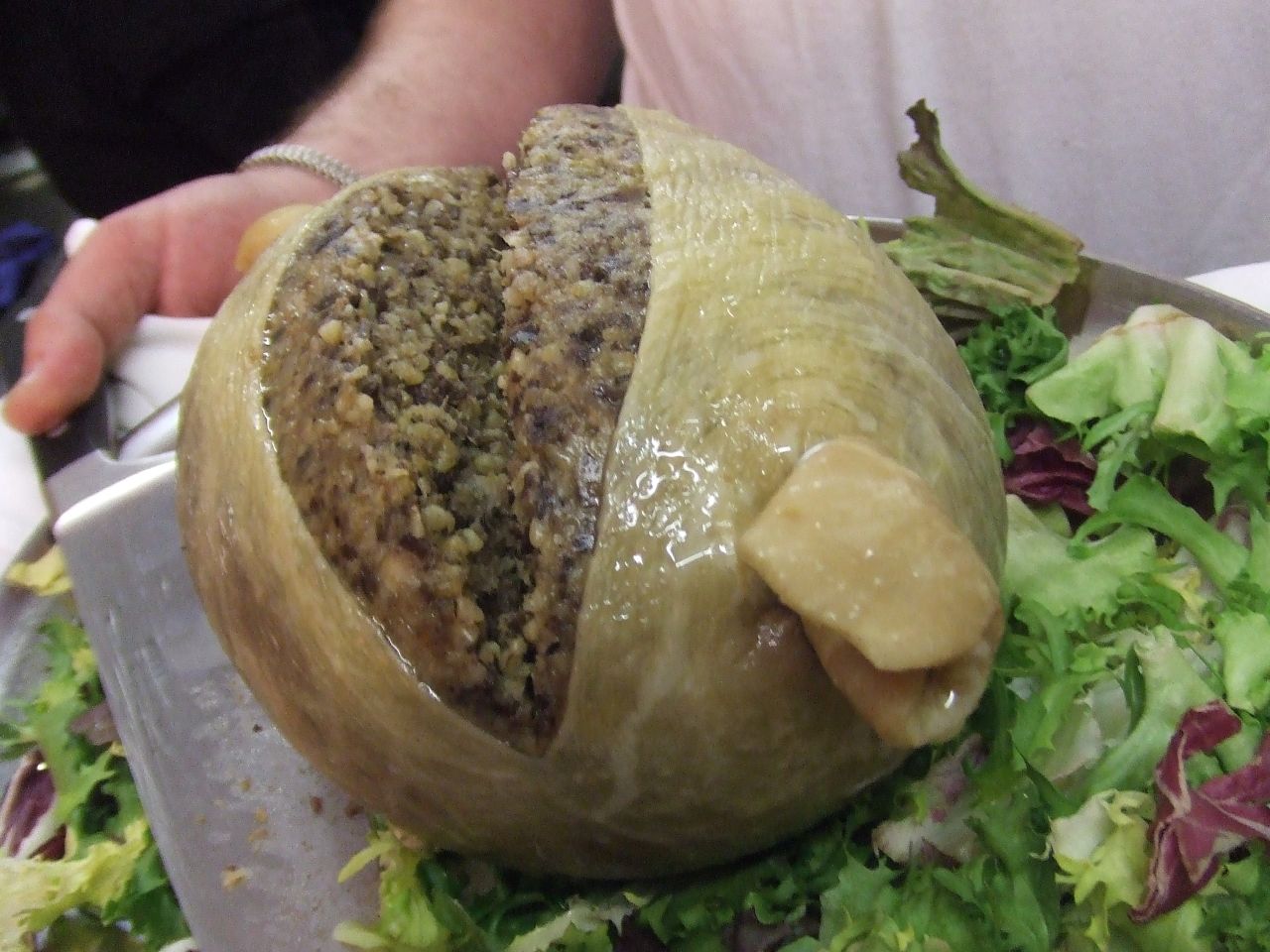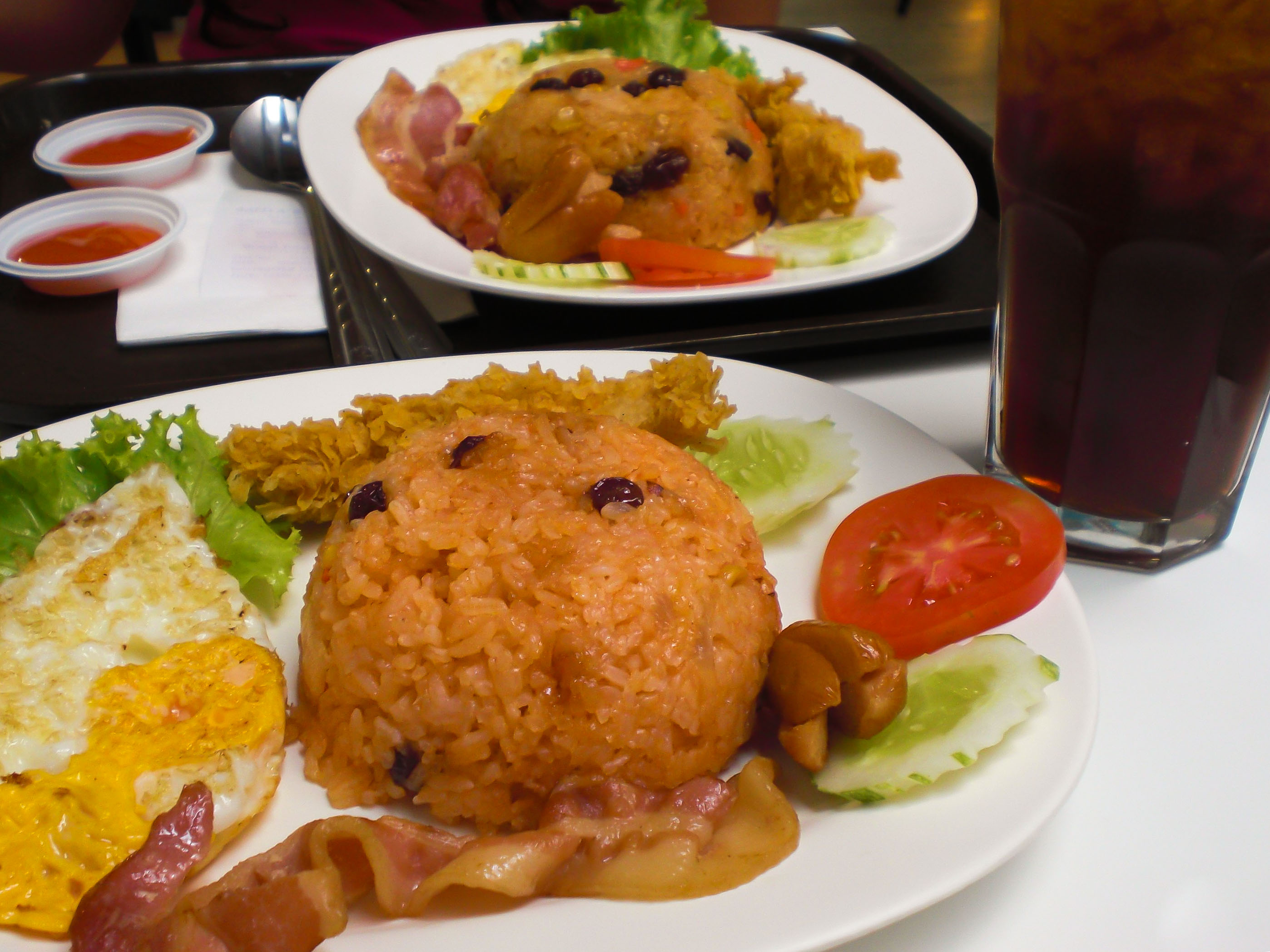|
Zarda (food)
Zarda ( hi, ज़र्दा, ur, , ) is a traditional boiled sweet rice dish, native to the Indian subcontinent, made with saffron, milk and sugar, and flavoured with cardamoms, raisins, pistachios or almonds. The name Zarda comes from Persian word 'zard' meaning 'yellow', hence named since the food coloring added to the rice gives it a yellow color. Zarda is typically served after a meal. In the Indian subcontinent, zarda was and still remains a popular dessert on special occasions such as weddings. It is quite similar to Sholezard, a traditional Iranian dessert, and Zerde, a traditional Turkish dessert. Often in Pakistan, instead of yellow food coloring, multiple food colorings are added so the rice grains are of multiple colors. Additionally, khoya, candied fruits ( murabba) and nuts are an essential part of zarda made at auspicious occasions. There also is a popular use of raisins, and other dried fruits to dish. Dating back to Mughal India, zarda had a variation ... [...More Info...] [...Related Items...] OR: [Wikipedia] [Google] [Baidu] |
Mughal Empire
The Mughal Empire was an early-modern empire that controlled much of South Asia between the 16th and 19th centuries. Quote: "Although the first two Timurid emperors and many of their noblemen were recent migrants to the subcontinent, the dynasty and the empire itself became indisputably Indian. The interests and futures of all concerned were in India, not in ancestral homelands in the Middle East or Central Asia. Furthermore, the Mughal empire emerged from the Indian historical experience. It was the end product of a millennium of Muslim conquest, colonization, and state-building in the Indian subcontinent." For some two hundred years, the empire stretched from the outer fringes of the Indus river basin in the west, northern Afghanistan in the northwest, and Kashmir in the north, to the highlands of present-day Assam and Bangladesh in the east, and the uplands of the Deccan Plateau in South India. Quote: "The realm so defined and governed was a vast territory of some , rang ... [...More Info...] [...Related Items...] OR: [Wikipedia] [Google] [Baidu] |
Persian Language
Persian (), also known by its endonym Farsi (, ', ), is a Western Iranian language belonging to the Iranian branch of the Indo-Iranian subdivision of the Indo-European languages. Persian is a pluricentric language predominantly spoken and used officially within Iran, Afghanistan, and Tajikistan in three mutually intelligible standard varieties, namely Iranian Persian (officially known as ''Persian''), Dari Persian (officially known as ''Dari'' since 1964) and Tajiki Persian (officially known as ''Tajik'' since 1999).Siddikzoda, S. "Tajik Language: Farsi or not Farsi?" in ''Media Insight Central Asia #27'', August 2002. It is also spoken natively in the Tajik variety by a significant population within Uzbekistan, as well as within other regions with a Persianate history in the cultural sphere of Greater Iran. It is written officially within Iran and Afghanistan in the Persian alphabet, a derivation of the Arabic script, and within Tajikistan in the Tajik alphabet, a der ... [...More Info...] [...Related Items...] OR: [Wikipedia] [Google] [Baidu] |
Indian Desserts
Mithai (sweets) are the confectionery and desserts of the Indian subcontinent.The Sweet Side of the Subcontinent Raison d'Etre, New York City (September 20, 2012) Thousands of dedicated shops in India, Bangladesh, Nepal, Pakistan and Sri Lanka sell nothing but sweets. Sugarcane has been grown in the Indian subcontinent for thousands of years, and the art of refining sugar was invented there 8000 years ago (6000 BCE) by the Indus Valley civilisation. The English word "sugar" comes from a Sanskrit word for refined sugar, while the word "candy" comes from Sanskrit word for the unrefined sugar – one of the simplest raw forms of sweet. Over its long history, cuisines of the Indian subcontinent developed a diverse ... [...More Info...] [...Related Items...] OR: [Wikipedia] [Google] [Baidu] |
Pudding
Pudding is a type of food. It can be either a dessert or a savoury (salty or spicy) dish served as part of the main meal. In the United States, ''pudding'' means a sweet, milk-based dessert similar in consistency to egg-based custards, instant custards or a mousse, often commercially set using cornstarch, gelatin or similar coagulating agent such as Jell-O. The modern American meaning of pudding as dessert has evolved from the original almost exclusive use of the term to describe savoury dishes, specifically those created using a process similar to that used for sausages, in which meat and other ingredients in mostly liquid form are encased and then steamed or boiled to set the contents. In the United Kingdom and some of the Commonwealth countries, the word ''pudding'' is used to describe sweet and savoury dishes. Savoury puddings include Yorkshire pudding, black pudding, suet pudding and steak and kidney pudding. Unless qualified, however, pudding usually means desse ... [...More Info...] [...Related Items...] OR: [Wikipedia] [Google] [Baidu] |
Pakistani Rice Dishes
Pakistani rice dishes are very popular in most regions of Pakistan, which is a major exporter and consumer of rice. Basmati is typically used, and rice dishes are sometimes eaten mixed with other dishes. The most simple dish of Pakistani cuisine is plain cooked rice (chawal) eaten with dal (lentil). Khichdi is plain cooked rice cooked with dal. The Karhi chawal is plain cooked rice eaten with karhi. Biryani is cooked with beef, lamb, chicken, fish or shrimp. Plain cooked rice The rice is rinsed a few times in water and drained until the water turns from milky to clear. The rice should be soaked in water for at least 30 minutes before cooking. The unsoaked rice takes 25 minutes to parboil, whereas the soaked grains take only 15 minutes. Rice should be parboiled till ''al dente''. Place the presoaked rice into a pot with some cold tap water at a ratio of about 1 cup rice to 1.5 cups water. Cook the rice, with he pot lid open, at medium heat till the water is mostly evaporated and t ... [...More Info...] [...Related Items...] OR: [Wikipedia] [Google] [Baidu] |
List Of Rice Dishes
This is a list of rice dishes from all over the world, arranged alphabetically. Rice is the seed of the monocot plants ''Oryza sativa'' (Asian rice) or ''Oryza glaberrima'' (African rice). As a cereal grain, it is the most widely consumed staple food for a large part of the world's human population, especially in Asia and the West Indies. It is the grain with the second-highest worldwide production, after maize (corn), according to data for 2010. Rice dishes Unsorted * Aiwowo * Bagoong fried rice * Buttered rice * Kanika * Mutabbaq samak * Sayadieh See also * Arabic rice – a pilaf preparation using rice and vermicelli noodles * List of fried rice dishes * List of rice beverages * List of rice varieties * List of tortilla-based dishes * Pakistani rice dishes References {{Lists of prepared foods * Rice dishes Rice dishes Rice dishes Rice dishes This is a list of rice dishes from all over the world, arranged alphabetically. Rice is the seed of the monocot plants ''O ... [...More Info...] [...Related Items...] OR: [Wikipedia] [Google] [Baidu] |
Lent
Lent ( la, Quadragesima, 'Fortieth') is a solemn religious observance in the liturgical calendar commemorating the 40 days Jesus spent fasting in the desert and enduring temptation by Satan, according to the Gospels of Matthew, Mark and Luke, before beginning his public ministry. Lent is observed in the Anglican, Eastern Orthodox, Lutheran, Methodist, Moravian, Oriental Orthodox, Persian, United Protestant and Roman Catholic traditions. Some Anabaptist, Baptist, Reformed (including certain Continental Reformed, Presbyterian and Congregationalist churches), and nondenominational Christian churches also observe Lent, although many churches in these traditions do not. Which days are enumerated as being part of Lent differs between denominations (see below), although in all of them Lent is described as lasting for a total duration of 40 days. In Lent-observing Western Churches, Lent begins on Ash Wednesday and ends approximately six weeks later; depending on the Christian ... [...More Info...] [...Related Items...] OR: [Wikipedia] [Google] [Baidu] |
Shahjahan
Shihab-ud-Din Muhammad Khurram (5 January 1592 – 22 January 1666), better known by his regnal name Shah Jahan I (; ), was the fifth emperor of the Mughal Empire, reigning from January 1628 until July 1658. Under his emperorship, the Mughals reached the peak of their architectural achievements and cultural glory. The third son of Jahangir (), Shah Jahan participated in the military campaigns against the Rajputs of Mewar and the Lodis of Deccan. After Jahangir's death in October 1627, Shah Jahan defeated his youngest brother Shahryar Mirza and crowned himself emperor in the Agra Fort. In addition to Shahryar, Shah Jahan executed most of his rival claimants to the throne. He commissioned many monuments, including the Red Fort, Shah Jahan Mosque and the Taj Mahal, where his favorite wife Mumtaz Mahal is entombed. In foreign affairs, Shah Jahan presided over the aggressive campaigns against the Deccan Sultanates, the conflicts with the Portuguese, and the wars with Safavids ... [...More Info...] [...Related Items...] OR: [Wikipedia] [Google] [Baidu] |
Mughal India
The Mughal Empire was an early-modern empire that controlled much of South Asia between the 16th and 19th centuries. Quote: "Although the first two Timurid emperors and many of their noblemen were recent migrants to the subcontinent, the dynasty and the empire itself became indisputably Indian. The interests and futures of all concerned were in India, not in ancestral homelands in the Middle East or Central Asia. Furthermore, the Mughal empire emerged from the Indian historical experience. It was the end product of a millennium of Muslim conquest, colonization, and state-building in the Indian subcontinent." For some two hundred years, the empire stretched from the outer fringes of the Indus river basin in the west, northern Afghanistan in the northwest, and Kashmir in the north, to the highlands of present-day Assam and Bangladesh in the east, and the uplands of the Deccan Plateau in South India. Quote: "The realm so defined and governed was a vast territory of some , rang ... [...More Info...] [...Related Items...] OR: [Wikipedia] [Google] [Baidu] |
Murabba
Murabba (from ar, مربى) refers to a sweet fruit preserve which is popular in many regions of South Caucasus, Central Asia, South Asia, and the Middle East. It is generally prepared with fruits, sugar, and spices. Popular fruits that are candied are apple, apricot, gooseberry (amla), mango, plum, quince, and winter melon. Gallery File:Murabba.jpg, Winter Melon Murabba from Nepal File:Təbriz Balqabaq Mürəbbəsi.jpg, Butternut Pumpkin jam or murabba in Tabriz, Iranian Azerbaijan File:Təbrizin müxtəlif mürəbbə növləri.jpg, Different types of murabba in Tabriz, Iranian Azerbaijan Azerbaijan or Azarbaijan ( fa, آذربایجان, ''Āzarbāijān'' ; az-Arab, آذربایجان, ''Āzerbāyjān'' ), also known as Iranian Azerbaijan, is a historical region in northwestern Iran that borders Iraq, Turkey, the Nakhchivan ... References External linksThank Mughal love for fruit for Murabbas popularity in Indiaat Scroll.in Nepalese cuisine Gujarati cuisin ... [...More Info...] [...Related Items...] OR: [Wikipedia] [Google] [Baidu] |






